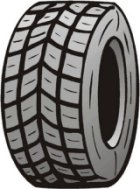
Worksheets and No Prep Teaching Resources
Reading Comprehension Worksheets
Transportation

Transportation
 Worksheets and No Prep Teaching Resources Reading Comprehension Worksheets Transportation |
 Transportation |
| edHelper's suggested reading level: | grades 5 to 7 | |
| Flesch-Kincaid grade level: | 8.15 |
| Print Tires (font options, pick words for additional puzzles, and more) |
| Quickly print reading comprehension |
| Print a proofreading activity |
|
Tires
By Trista L. Pollard |

|
 1 We see them on bicycles, trucks, airplanes, and automobiles. However, what do we really know about tires and how they entered the world of transportation? If tires could talk, their treads would probably share their tales of travel, mileage, and wear and tear throughout the years.
1 We see them on bicycles, trucks, airplanes, and automobiles. However, what do we really know about tires and how they entered the world of transportation? If tires could talk, their treads would probably share their tales of travel, mileage, and wear and tear throughout the years. |
Create Weekly Reading Books
Prepare for an entire week at once! |
| Leave your feedback on Tires (use this link if you found an error in the story) |
 |
Transportation
|